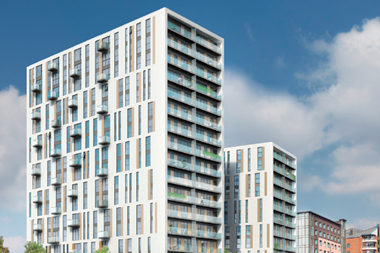The UK government has dropped plans to exempt large investors from a 3% residential property tax, causing concern for the country’s emerging private rented sector (PRS).
Yesterday’s UK Budget included changes to stamp duty land tax (SDLT) on buy-to-let residential property, as well as higher SDLT rates for commercial transactions.
Despite earlier consultation, UK chancellor George Osborne announced that SDLT would apply for investors owning or buying 15 or more residential properties.
Melanie Leech, chief executive of the British Property Federation (BPF), which had previously urged the government to adopt a “sensible” SDLT regime, said: “The government’s decision to not include an exemption for investors who are purchasing large portfolios of properties for rent is extremely disappointing and deals a huge blow to the build-to-rent sector.”
In its initial response to the government’s consultation on the surcharge last year, the industry body warned a higher rate of SDLT could “cancel out” progress the build-to-rent sector had made since 2011.
Institutionally owned PRS assets are still relatively new in the UK, where rental levels the average Briton spends £11,100 on rent before buying their first home, according to research by letting agent Harry Dhaliwal of national property group Belvoir. The survey also found that the average person rents for over three years (38 months) before buying for the first time.
The sector has attracted the likes of PGGM, which is investing with Legal & General Capital, as reported in January.
The Dutch pension fund manager and Legal & General Capital are looking to invest £600m (€790m) in UK PRS.
John Slade, chief executive at BNP Paribas Real Estate UK, said: “The institutional private rented sector will have a vital role to play in meeting the UK’s desperate need for homes and should be encouraged, not penalised, by the tax system.”
LaSalle Investment’s Andrew Stanford, who chairs the BPF’s Build to Rent committee, said failure to implement the exemption would have a “significant negative impact” on the ability to invest in the nascent build-to-rent sector.
John German, senior director of residential investment at Invesco Real Estate, told IPE Real Estate “the greater the regulation on institutional-grade investment, the less likely institutions are to come in”.
Under the changes, investors in properties costing more than £1.05m will pay more in SDLT than previously due on acquisition.
For commercial property, the government is changing the calculation of SDLT on freehold and leasehold premium transactions, so rates apply to the portion of the purchase price within each band.
The government is amending rates and thresholds so the portion of the transaction value up to £150,000 is charged at a rate of 0%, the portion between £150,001 and £250,000 is charged at a rate of 2%, and the portion over £250,000 is charged at a rate of 5%.
Slade said the changes were “disappointing” and would reduce liquidity in the commercial property market.
“Given the amount a higher top rate will raise, it is doubtful this is a risk worth taking,” he said.
Alex Barnes, tax partner at Irwin Mitchell, said the tax increases could have a “dramatic effect” on the UK property industry.
“The commercial property industry is an easy target for the chancellor given the attractiveness over recent years of UK commercial property,” he said.
“However, this may, like the high-end residential property market, now stall and ultimately cause tax revenues to decrease, leaving a bigger hole for the chancellor to fill going forward.”
Hitting commercial investment and institutional PRS with extra SDLT “makes no sense”, said Peter Cosmetatos, chief executive at CREFC Europe.
The SDLT changes will “surely end up hitting regeneration and mixed-use place making”, he said.
“For investors in larger properties, the change to the SDLT rules effectively means their stamp duty tax bills will go up by almost 25% overnight,” he added.
“The likelihood is that this cost will ultimately be passed on to tenants.”









